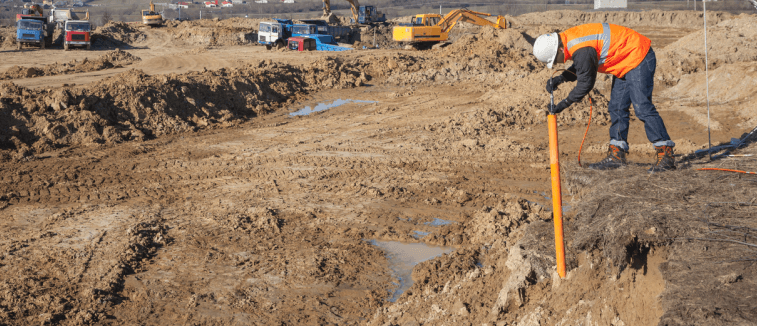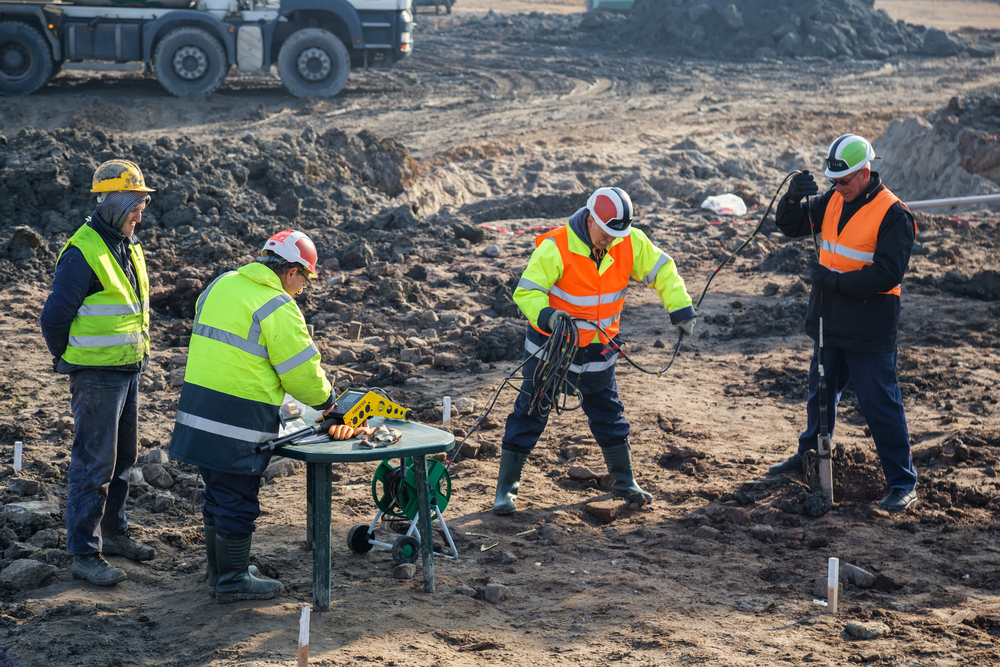Why Working With a Geo Tech Engineer is Important for Facility Building Jobs
Why Working With a Geo Tech Engineer is Important for Facility Building Jobs
Blog Article
The Relevance of Soil Analysis and Site Investigation in the Geotechnical Industry: Ensuring Safety And Security and Security in Civil Design
In the geotechnical market, dirt evaluation and site investigation are fundamental elements that underpin the security and stability of civil design projects. These procedures not only expose the attributes of subsurface products yet also inform vital decisions pertaining to layout and construction methods. By completely understanding soil buildings, designers can preemptively attend to prospective challenges, ultimately safeguarding structural integrity. Nonetheless, the ramifications of these investigations prolong past prompt task success; they can affect long-lasting sustainability and strength (geo tech engineer). As we check out the complexities of these practices, it becomes noticeable that their relevance can not be overemphasized.
Recognizing Soil Residences
In the realm of geotechnical design, a detailed understanding of dirt residential properties is vital for notified decision-making and reliable project design. The characterization of soil includes the exam of various physical and mechanical properties, such as grain size circulation, plasticity, cohesion, permeability, and shear strength. These homes dictate just how dirt behaves under various loading problems and ecological impacts, making them crucial for assessing site suitability for building tasks.
Soil classification systems, such as the Unified Dirt Category System (USCS) and the AASHTO category, supply structures for organizing dirts based upon their qualities. This classification help engineers in forecasting habits under tension, water flow, and settlement, thus influencing layout choices and building and construction methods.
Moreover, the interaction between soil and surrounding frameworks is a key consideration in geotechnical engineering. Comprehending soil residential properties assists recognize possible challenges, such as liquefaction in earthquake-prone areas or too much settlement in soft dirts. By thoroughly reviewing these residential properties, geotechnical engineers can guarantee the safety, stability, and long life of frameworks, inevitably contributing to the general strength of civil design tasks.
Approaches of Soil Analysis

In-situ tests consist of strategies such as Standard Infiltration Tests (SPT), Cone Infiltration Tests (CPT), and vane shear tests. SPT assesses the resistance of dirt to penetration, supplying data on density and strength, while CPT measures dirt resistance and pore stress, producing constant accounts of soil stratigraphy. Vane shear tests are particularly valuable for assessing the shear toughness of cohesive dirts.
Lab examinations complement these in-situ assessments and involve sampling dirt for controlled screening. Usual research laboratory techniques include Atterberg restrictions, which figure out the plasticity characteristics of fine-grained dirts, and compaction tests, which examine moisture-density connections. Extra tests, such as triaxial compression and unconfined compression examinations, are performed to assess the shear toughness of soil samples under different problems.
Duty of Site Examination
Site investigation plays a pivotal duty in the geotechnical engineering procedure, serving as the foundation for understanding subsurface problems. This detailed assessment includes systematic expedition of dirt and rock residential or commercial properties, groundwater levels, and various other geological functions that affect task security and stability.
Commonly, site investigations include a selection of methods, consisting of drilling boreholes, tasting, and in-situ screening. These techniques provide critical information on the mechanical and physical attributes of the ground, educating designers concerning possible challenges such as dirt settlement, bearing ability, and incline security.
Furthermore, website examination facilitates the identification of dangerous products and impurities, making it possible for the execution of appropriate removal procedures. By developing a precise subsurface profile, website examinations aid to reduce dangers related to construction, making sure that projects follow safety requirements and guidelines.
The searchings for from a complete website investigation not only guide layout choices but likewise influence building methods and timelines. In summary, the value of browse around here site examination can not be overemphasized; it is a necessary action in the geotechnical design procedure, laying the groundwork for effective task implementation while prioritizing public security and ecological honesty.
Influence On Job Design
A thorough understanding of soil features dramatically affects job style in the geotechnical industry. Dirt analysis educates engineers about the mechanical residential or commercial properties, composition, and behavior of the ground, which are critical factors in determining the feasibility and safety of a building job. Exact data on dirt leaks in the structure, compressibility, and toughness permit for the growth of effective structure designs, making certain that frameworks are sufficiently sustained and steady throughout their lifespan.
Furthermore, the presence of impurities or unstable dirt layers can prompt adjustments in task style, such as selecting different construction approaches or products. This proactive strategy minimizes dangers connected to soil settlement, extreme loading, or lateral motion, hence securing both the stability of the structure and public safety and security.
The integration of soil evaluation into project layout also promotes conformity with environmental factors to consider and regulatory demands. By addressing soil-related obstacles early in the design process, engineers can enhance source appropriation and reduce prospective delays and prices connected with unpredicted website problems. Inevitably, extensive soil analysis enhances the overall high quality and durability of civil design tasks, resulting in more durable and lasting infrastructure.
Situation Studies and Examples
Showing the critical role of soil evaluation in the geotechnical market, different situation researches highlight its effect on task end results. One remarkable instance is the building and construction of a skyscraper in see this site downtown Los Angeles, where extensive soil testing disclosed unsteady subsurface conditions. consulting engineer. By determining the existence of expansive clay, designers were able to redesign the foundation, including deep pilings that made certain stability and safety and security, inevitably protecting against possible structural failures

Last but not least, a dam task in the Southeast faced hold-ups as a result of unexpected soil disintegration concerns. Thorough soil analysis permitted engineers to carry out effective stabilization methods, making certain that the dam satisfied security policies while adhering to the task timeline. These situations emphasize the need of extensive soil evaluation and website examination, highlighting their essential function in achieving effective and risk-free civil design tasks.
Final Thought
In conclusion, dirt analysis and website examination are fundamental parts of the geotechnical market, playing an important function in guaranteeing the security and security of civil engineering jobs. By offering crucial data on soil buildings and subsurface problems, these procedures inform foundation design and construction techniques. In addition, detailed examinations add to hazard identification and danger mitigation, inevitably boosting the longevity and toughness of structures while maximizing resource allocation throughout the job lifecycle.
In the geotechnical market, dirt analysis and website examination are foundational elements that underpin the safety and security and stability of civil engineering tasks. Comprehending soil buildings assists determine possible challenges, such as liquefaction in earthquake-prone locations or too much settlement in soft dirts. SPT evaluates the resistance of dirt to infiltration, offering data on thickness and here are the findings strength, while CPT determines soil resistance and pore pressure, generating continuous accounts of soil stratigraphy. These instances underscore the need of detailed soil analysis and site examination, highlighting their crucial role in accomplishing secure and effective civil design projects.
In final thought, dirt analysis and site examination are essential parts of the geotechnical industry, playing an important role in making sure the security and security of civil design jobs.
Report this page